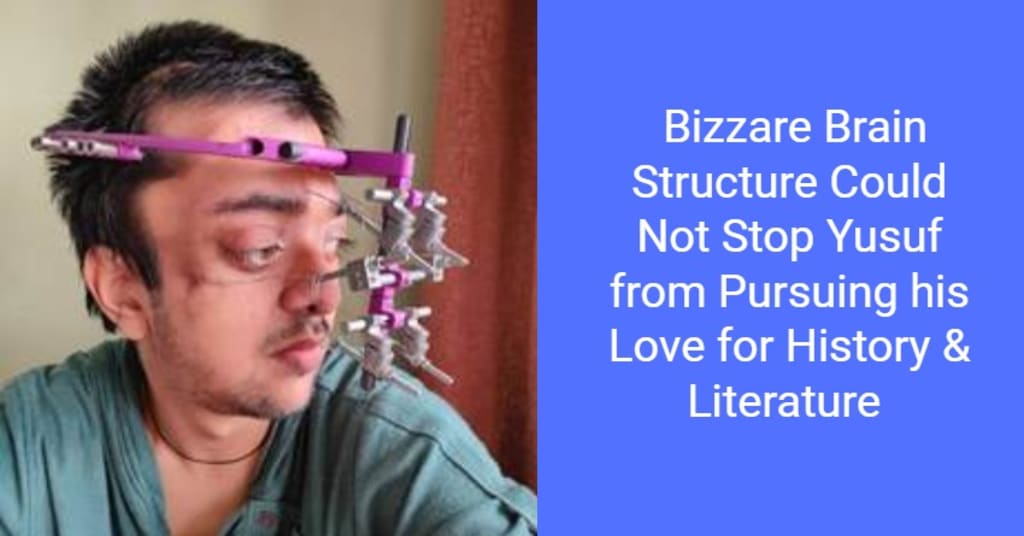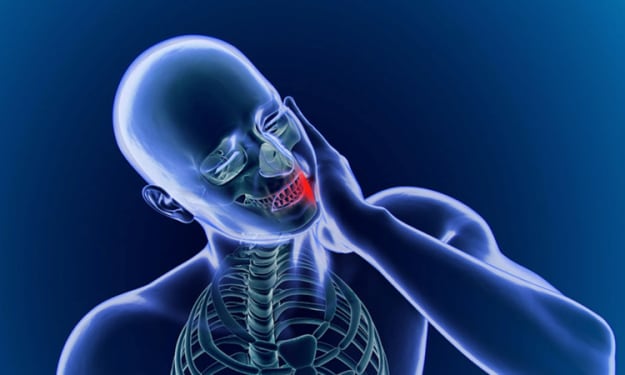Content warning
This story may contain sensitive material or discuss topics that some readers may find distressing. Reader discretion is advised. The views and opinions expressed in this story are those of the author and do not necessarily reflect the official policy or position of Vocal.
BIZZARE BRAIN STRUCTURE COULD NOT STOP YUSUF FROM PURSUING HIS LOVE FOR HISTORY & LITERATURE
INTERESTING TOPIC

Crouzon Syndrome is a rare genetically inherited disorder with an incidence rate of 1 in 60,000 newborns worldwide.*
Cranial sutures or anatomical lines are the fibrous tissue bands that join the bony plates of the skull together. In Crouzon Syndrome, the sutures, in an infant merge prematurely, affecting the normal growth of the skull and head, leading to an alteration in the shape and, therefore, the development of the skull. The seriousness of craniosynostosis does vary from one child to another. The symptoms primarily include abnormalities of the face and head. Intelligence is usually not affected.
Craniosynostosis and many other features characterise the syndrome. It can cause an abnormal shape of the head and face with babies having –
Short and wide or long and narrow head
Enlarged Forehead
Shallow orbits (eye sockets) leading to bulging eyeballs
Flattened Cheeks
Poorly Developed Upperjaw
Protruding lower jaw
Curved beak-like nose
The other features associated with this syndrome are –
Inflammation of Cornea (exposure Keratitis) due to bulging eyeballs (proptosis)
Squint
Vision Loss
Hearing Loss
Dentition Problems
A cleft in the lip/palate
Narrow airways leading to respiratory problems
Sleep apnoea
There can be increased pressure in the brain and accumulation of excessive fluid in the brain (hydrocephalus). Most of these children can have a normal life expectancy if diagnosed early and treated timely by an experienced team. The social stigma around abnormal facial appearance and lack of awareness about the condition leads to many children not receiving appropriate and timely diagnosis and treatment.
Treating this syndrome requires a multidisciplinary team approach consisting of specialists like Neurosurgeons, Plastic Surgeons, ENT Surgeons, Ophthalmologists, Dental Surgeons, Paediatric Anaesthetists, Speech and Language Therapists, etc. Such children may require more than one surgical procedure during their lifetime.
Yusuf Ali, a child with Crouzon’s Syndrome, was recently treated by the craniofacial team at Narayana Health’s SRCC Children’s Hospital.
This 17-year-old child was having severe issues with breathing, including sleep apnoea. Besides, his bulging eyeballs were at risk of exposure to keratitis. He had undergone two surgeries as a baby, namely a Ventriculoperitoneal shunt for excessive fluid in the brain (hydrocephalus) and a Fronto Orbital advancement to bring his flattened forehead forward.
This admission was planned for surgery to bring his forehead and mid-face forward to make space for his eyeballs and increase the diameter of his airways through the nose and mouth. The surgery is called Monobloc Advancement, using a RED (Rigid External Distractor) frame. Wires attached This frame to the sides of his skull, forehead, cheek and jaw bones. The frame was then used to advance the forehead and face by 1 mm/day starting one week after surgery. The frame stayed on the patient’s head for 2-3 months, after which it was removed, confirming adequate advancement in imaging.
This process of slow advancement leads to new bone formation in the gap generated by pulling the forehead and face forward. A team of Craniofacial Surgeons comprising Plastic Surgeons Dr Nitin Mokal & Dr Amita Hiremath and Neurosurgeons Dr Uday Andar & Dr Saurav Samantray performed the procedure.
A brilliant and brave boy, Yusuf cooperated very well with the whole procedure. His mother noticed a discernible change in his smile and eyes immediately after the surgery, and the change made her feel emotional and optimistic about the surgery. Yusuf could eat, drink, sleep, read, walk and do every other routine activity within a week of surgery. On Yusuf’s birth, the Akhtar family were told that Yusuf would never make it past his childhood and that if he did, he would grow up with severe mental retardation and disability. His story proves the need for awareness and sensitivity towards a condition like Crouzon’s Syndrome. With correct guidance and motivation, such children, if referred to and treated by a team experienced in managing Craniofacial disorders, can have a normal life and future!
About the Creator
Enjoyed the story? Support the Creator.
Subscribe for free to receive all their stories in your feed. You could also pledge your support or give them a one-off tip, letting them know you appreciate their work.





Comments
There are no comments for this story
Be the first to respond and start the conversation.